Abstract
Although there are many factors influencing the genotype proportions in a small population [1], a heterozygote excess, caused by avoidance of incestuous matings, will often be the expected observation. In the population of the small South-Atlantic islands of Tristan da Cunha, such an excess if observed [2], and we have investigated its origin, partitioning the population by sex and by generation. Although for such a small population the test for random pairing of genes [3, 4] is not sufficiently powerful to produce significant results, the pattern of homozygote deficiency is suggestive of avoidance of close matings. We have also investigated the effect of current nuclear family structure and family-size distribution.
Full text
PDF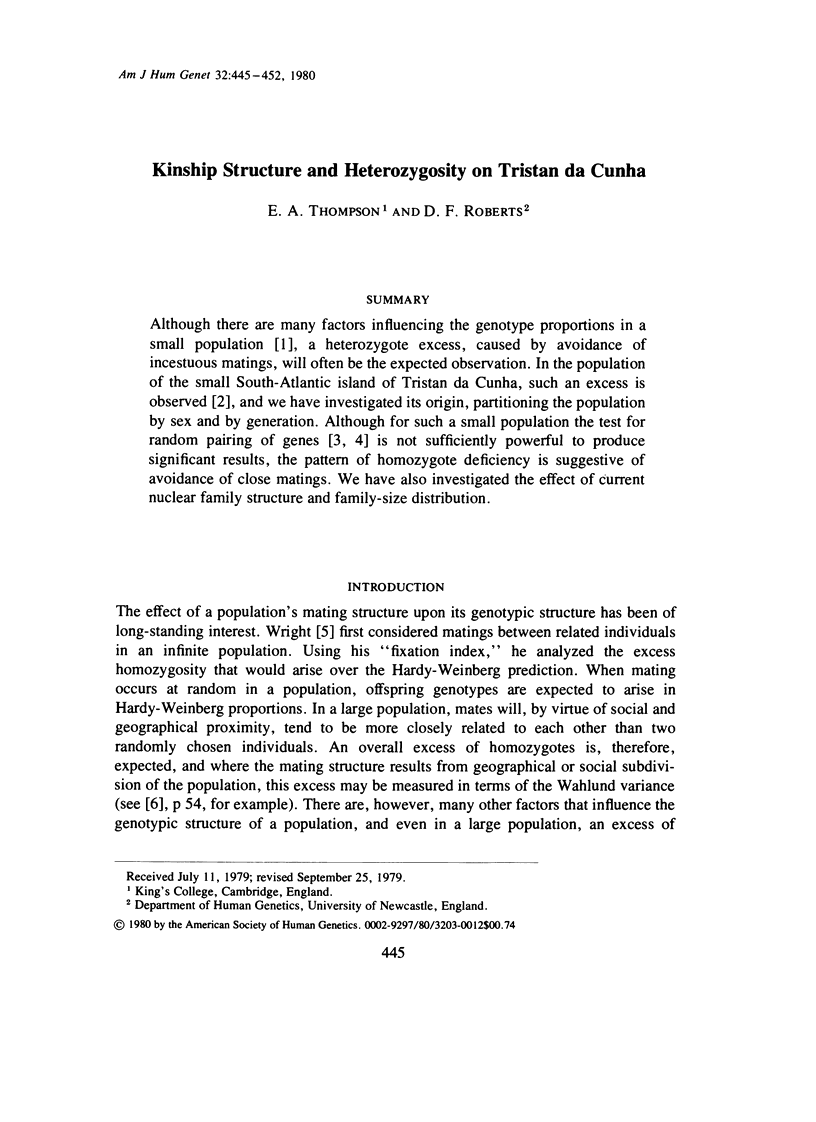
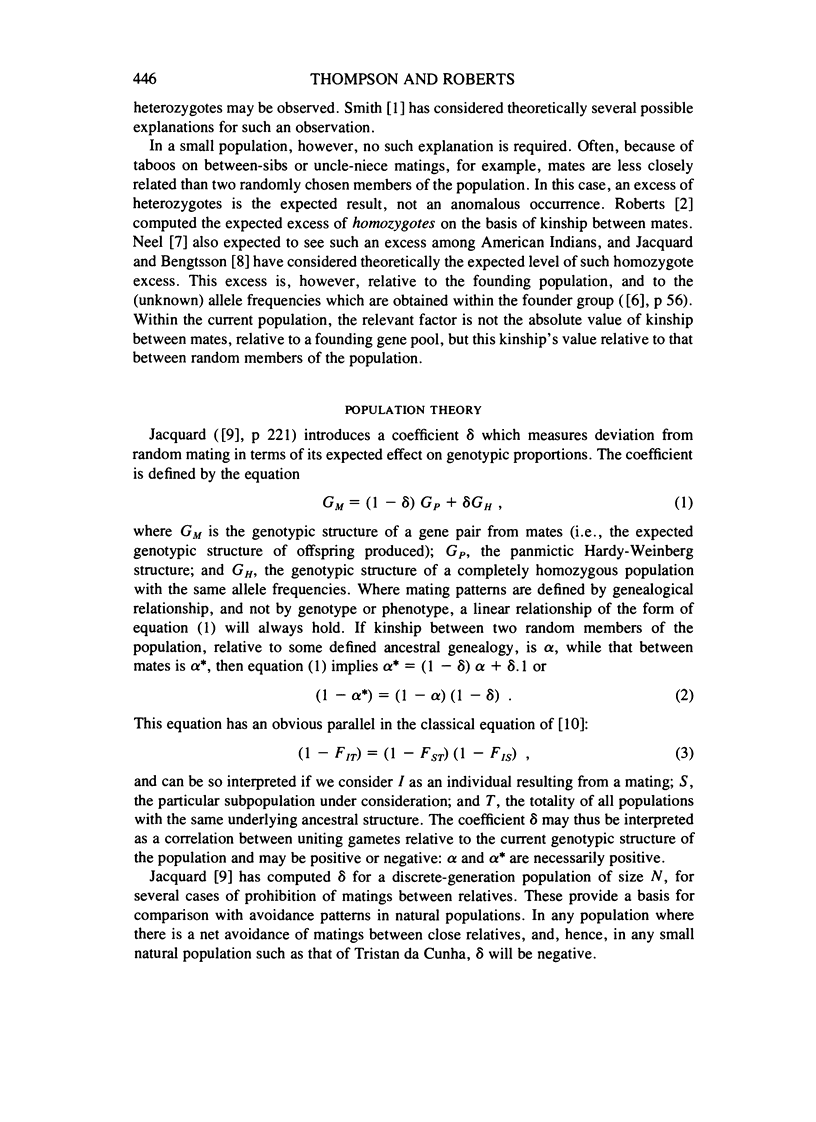
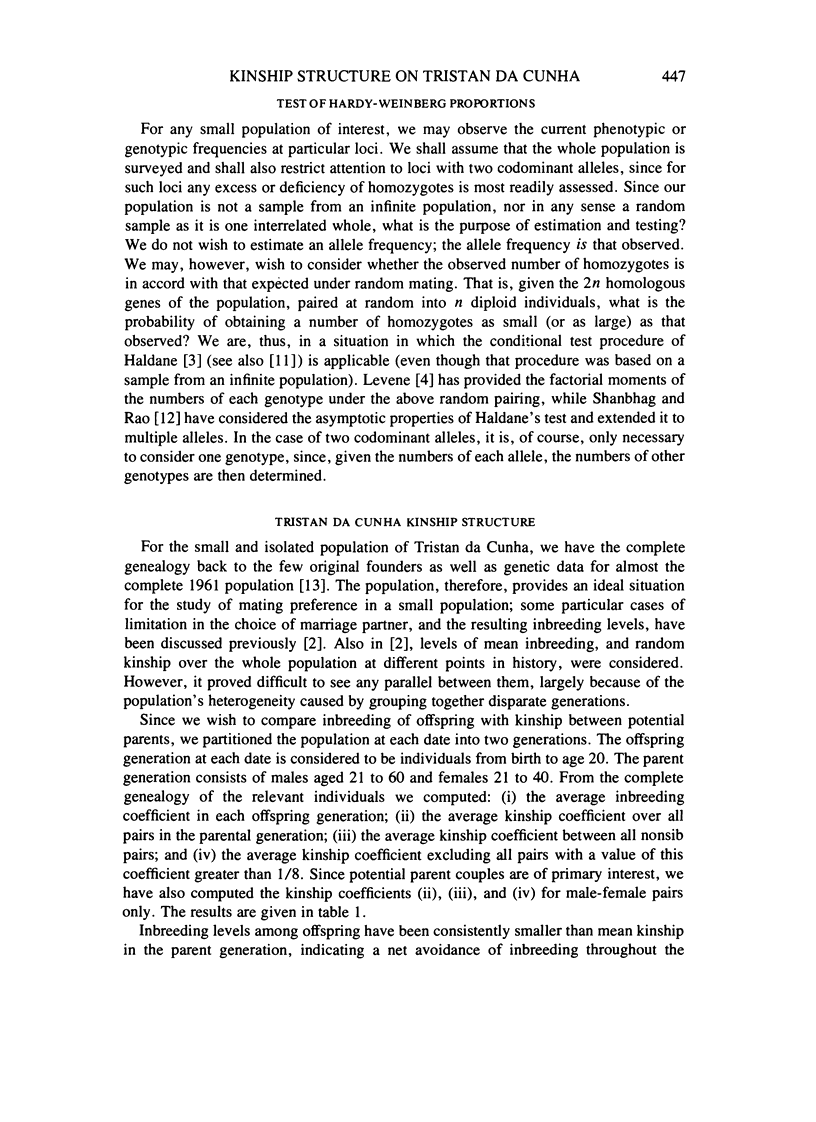
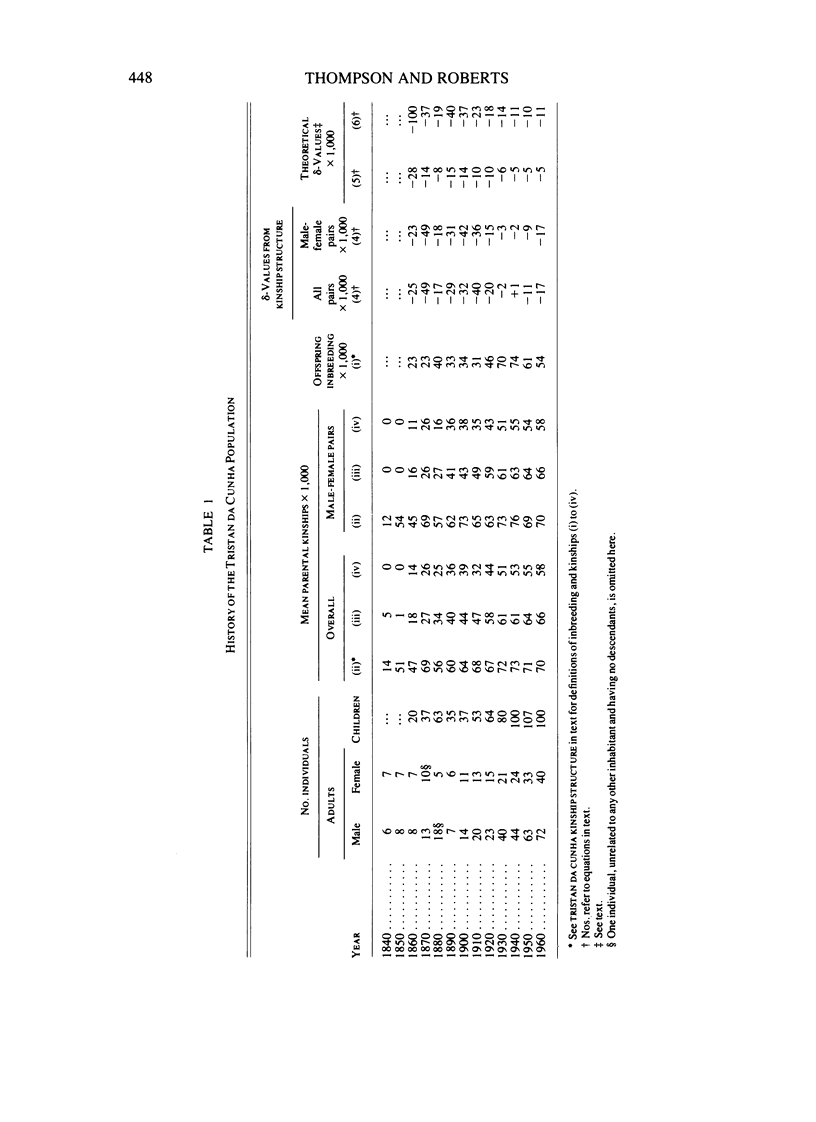
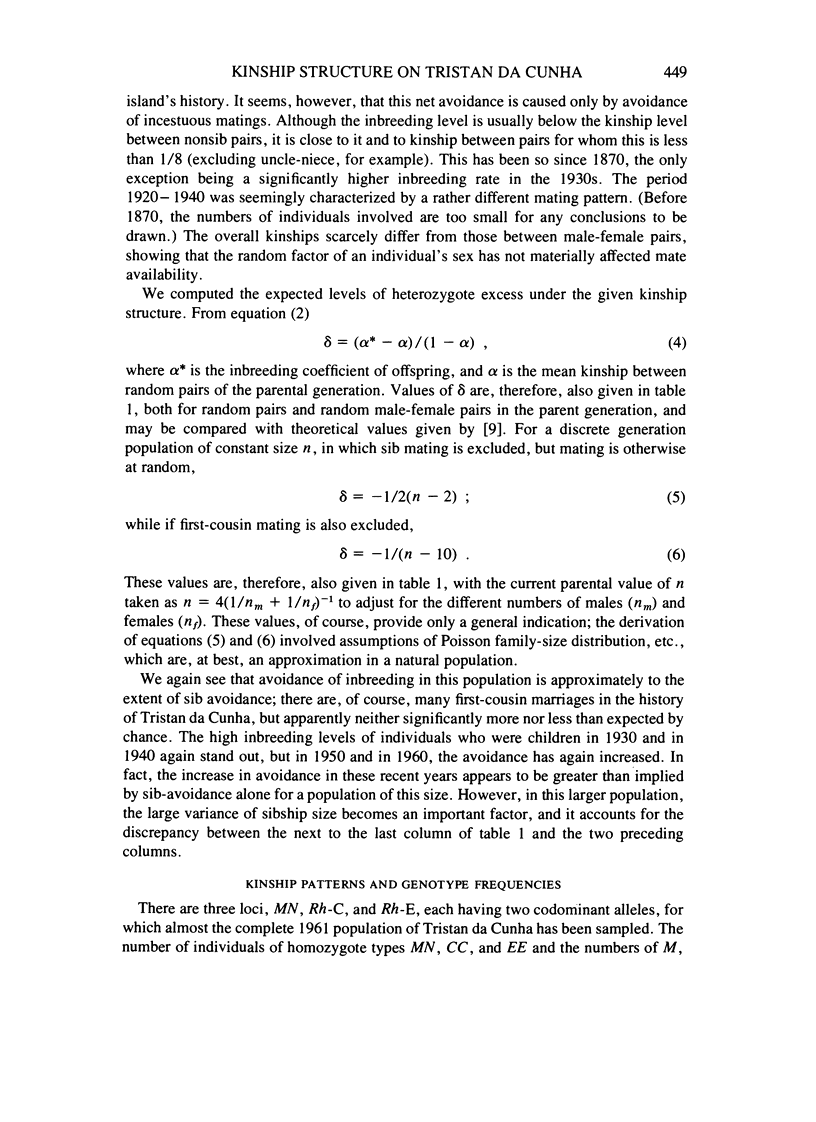
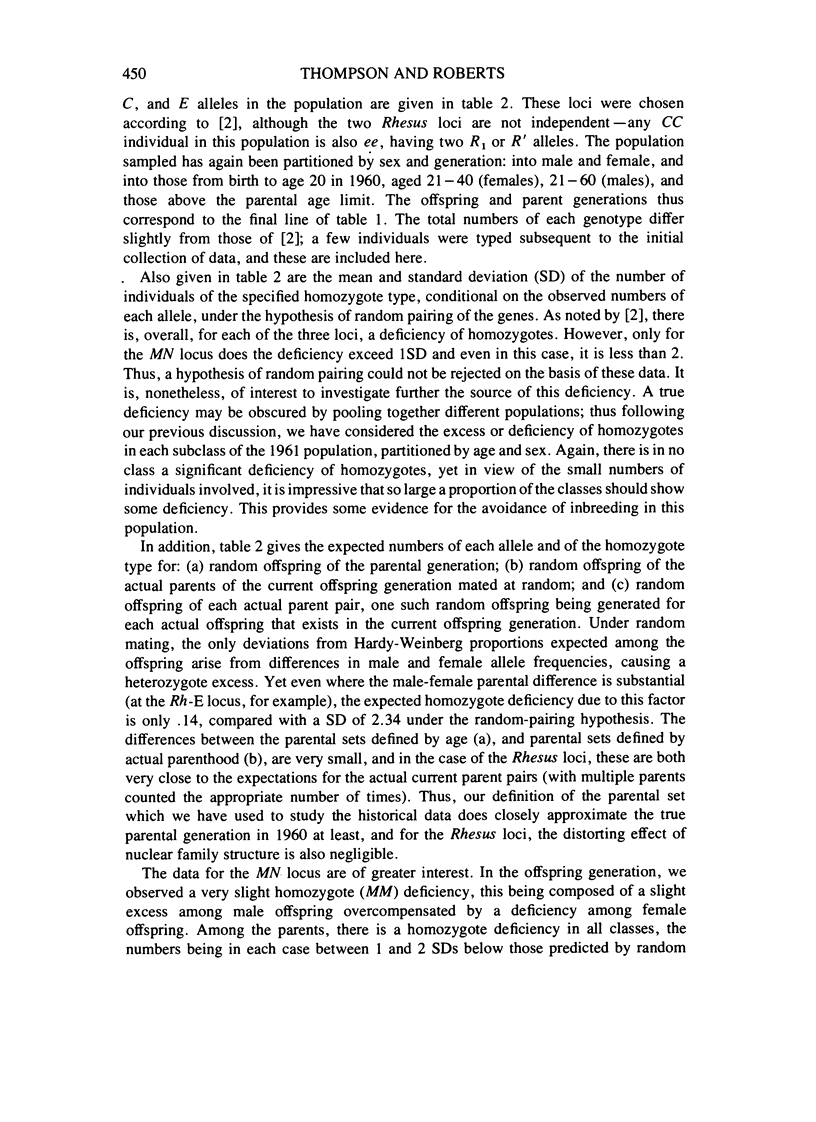
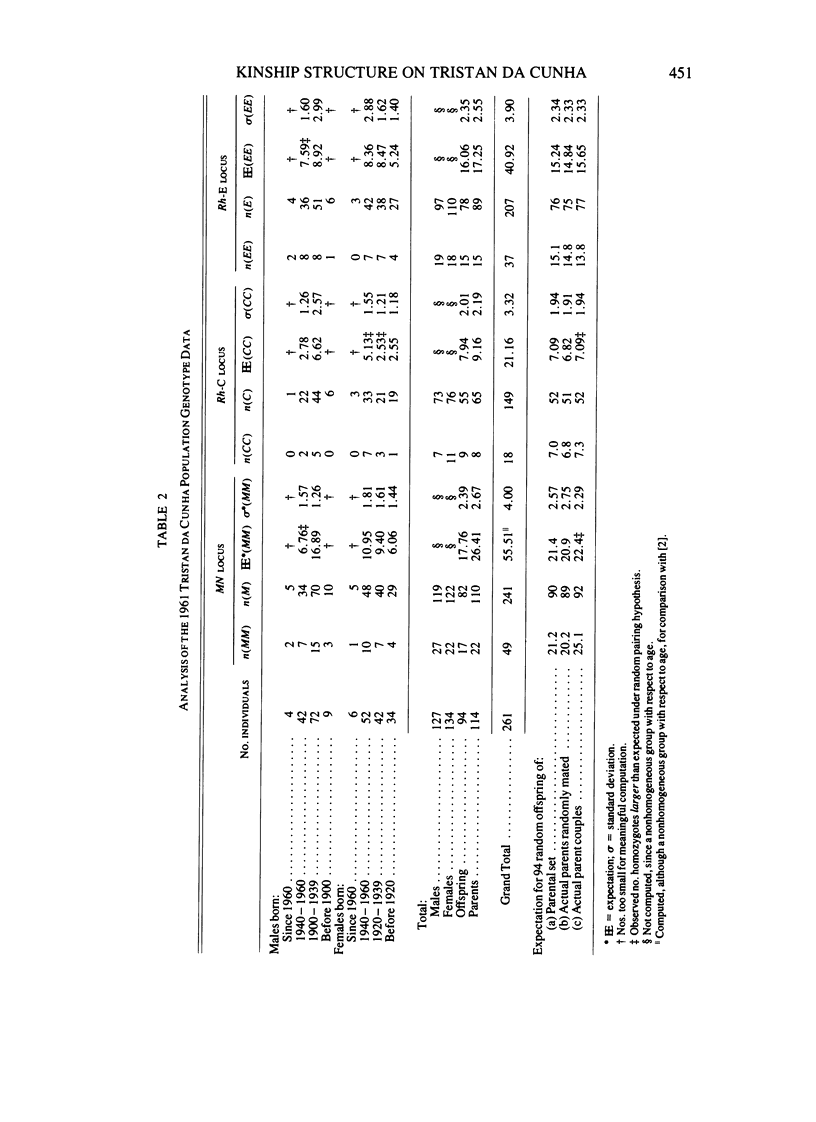
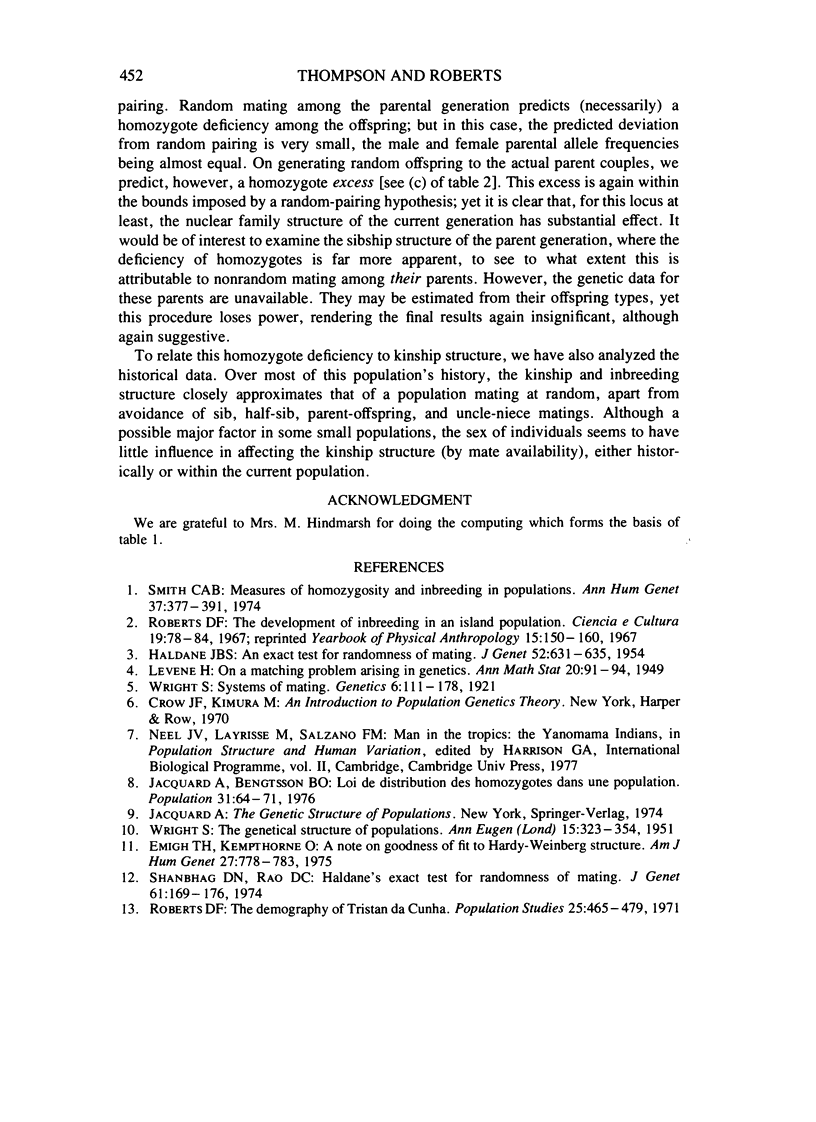
Selected References
These references are in PubMed. This may not be the complete list of references from this article.
- Emigh T. H., Kempthorne O. A note on goodness of fit of a population to Hardy-Weinberg structure. Am J Hum Genet. 1975 Nov;27(6):778–783. [PMC free article] [PubMed] [Google Scholar]
- Smith C. A. Measures of homozygosity and inbreeding in populations. Ann Hum Genet. 1974 May;37(4):377–391. doi: 10.1111/j.1469-1809.1974.tb01844.x. [DOI] [PubMed] [Google Scholar]
- Wright S. Systems of Mating. V. General Considerations. Genetics. 1921 Mar;6(2):167–178. doi: 10.1093/genetics/6.2.167. [DOI] [PMC free article] [PubMed] [Google Scholar]


